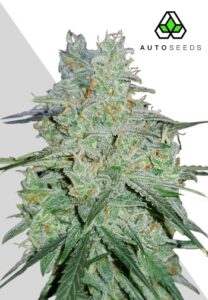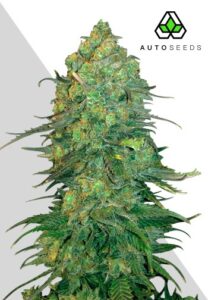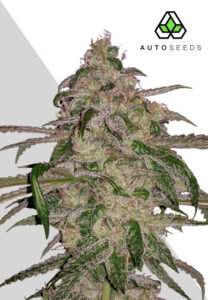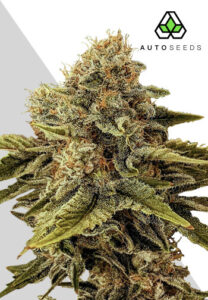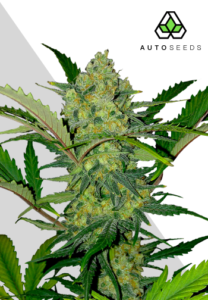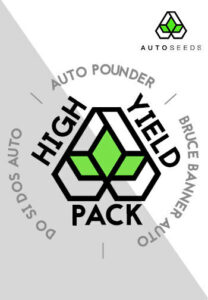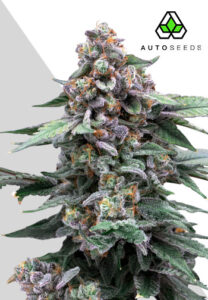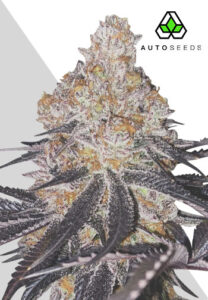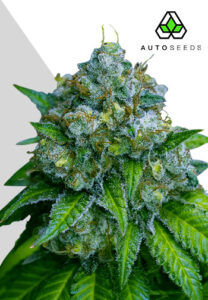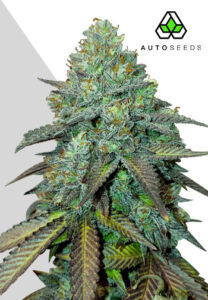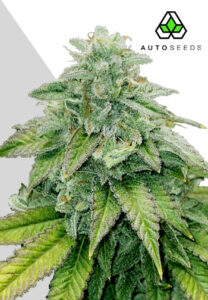
How much do autoflowers yield?
Ever wondered how much marijuana you could yield from an Autoflower? Well, 10 years ago the answer would have been ‘not very much’. But in the last decade thanks to our extensive breeding program, the amount of bud that you can get from a single autoflowering plant has massively increased.
There are multiple factors that determine the actual yield of an autoflower plant. These may range from the plant’s genetics to the light schedule, types of lights used, the size of the pot, and even the training methods employed.
In this article, we will cover all of the factors that influence the yield of an Autoflower to help you to maximise the potential of your next grow.
What is the most an autoflower can yield?
The maximum yield of an autoflower plant can vary depending on the strain, the growing conditions, and the skill of the grower. The highest yielding autoflower strains can produce up to 600g/m² indoors and 200g/plant outdoors.
Here are some of our highest-yielding autoflower seeds:
These strains are all capable of producing massive yields, but they will need to be grown in the right conditions to reach their full potential. Here are some tips for maximizing the yield of your autoflower plants:
- Use a high-quality soil or substrate.
- Provide plenty of light.
- Water regularly and evenly.
- Fertilize regularly with a balanced fertilizer.
- Control pests and diseases.
- Harvest at the right time.
How is yield calculated: Wet Vs Dry Yields
Wet yield refers to the weight of cannabis immediately after harvest when the plant is still fresh. On the other hand, dry yield is the weight of the end product after it has been dried and cured.
After harvest, cannabis plants contain approximately 70-80% water, which means the wet yield includes a significant amount of moisture that will be lost during the drying and curing process.
Following the drying process, the buds will have shrivelled significantly, leading to a reduction of approximately 70-80% in weight. When growers talk about ounces and grams of yield, they are usually referring to the dry yield. Measuring the yield in wet form offers a quick overview of the growing operation’s success, even before curing begins. However, the most accurate measurement of cultivation success is the quantity of viable, dry herb produced.
What else affects the yield of an autoflower?
The yield of an autoflower plant is the result of an intricate interplay of several factors. By focusing on these key elements, cannabis cultivators can tap into the strains’ full yield potential.
Genetics
The genetics of a cannabis plant arguably plays the most critical role in determining its potential yield. Why? Each strain is genetically wired with a blueprint dictating its overall size, growth pattern, and, consequently, the potential yield. This is why “high yield” and “heavy producer” strains often attract experienced growers who have their sight set on the bud outcome.
Lighting
A common adage among indoor cannabis growers is that “more light equals more yield.” While this notion holds some truth, the type of light, its intensity, light spectrum, and schedule significantly all play just as big a part in how much your plan yields.
Either an 18/6 or 20/4 light to darkness schedule (18 hours light, 6 hours darkness) is often recommended for maximizing autoflower yield. The spectrum of light is equally crucial, with a recommended Blue Spectrum (400-550nm) during the vegetative stage shifting to a Red Spectrum (550-700nm) for flowering.
Pot size
The phrase ‘bigger is better’ rings true when choosing a pot size for your autoflowering cannabis. Generally, a bigger pot means more room for root expansion translating to a larger plant and, eventually, a higher yield.
The recommended pot size may vary depending if you’re growing indoors or outdoors; 10-15 liters (2.65-4 gallons) pots would suffice for outdoor plants. For indoor plants, considering space constraints, a modest 6.5-8.5 liters (1.72-2.24 gallons) would be ideal.
Training methods used
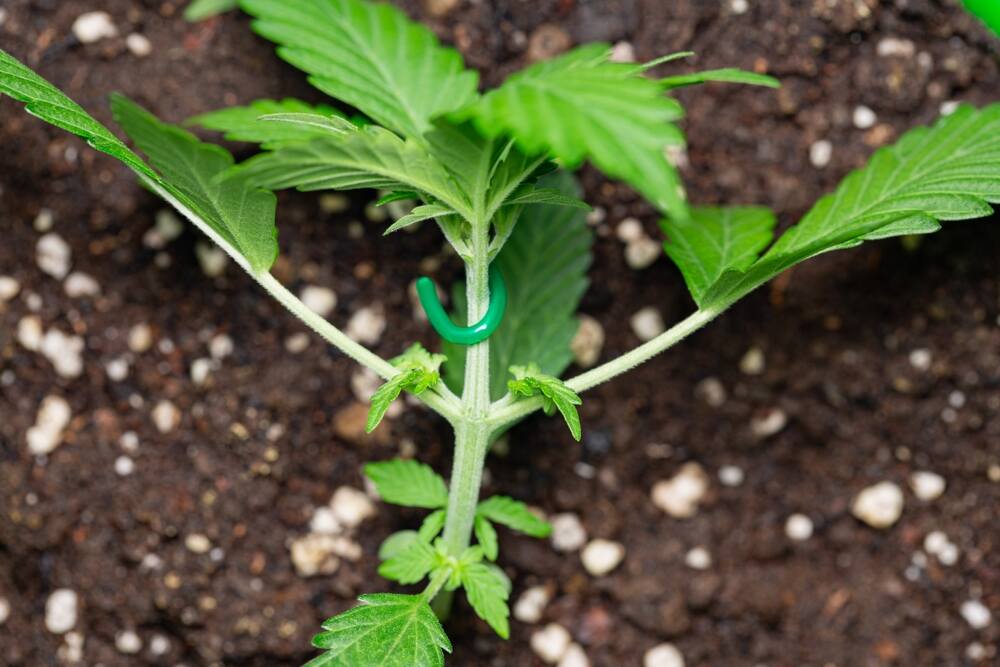
Low stress training are capable of transforming your autoflower yields considerably. The main goal of LST training autoflowers is to optimize their shape while they grow to encourage better light distribution. You can do this by tying down the branches of the plant or gently bending them as they grow so that the plant grows with a wider flatter canopy structure. The result is a plant that has better light distribution and multiple large bud sites come flowering time.
Types of Lights
The type of light you choose directly affects the rate of photosynthesis, impacting the plant’s growth and yield. Different types of lights provide different amounts and spectra of light. LEDs, as mentioned earlier are great choices based on their energy efficiency and ability to produce the correct light spectrum needed for each stage of growth. Other types of lights, such as HPS and MH lamps, also have their advantages, but they do generate more heat and consume more energy compared to LEDs.
By understanding and adjusting these factors, you can maximize the potential yield of your autoflowering plants. Remember, achieving a high yield with autoflower is entirely doable; all it requires are the right conditions and a bit of TLC.
Nutrients
Autoflowers can be sensitive to nutrients, with their impact having a significant role in determining the plant’s overall yield. Proper nutrient management is crucial as it influences the plant’s growth, health, and productivity.
Avoid any nutrients during the first 1-2 weeks, then in the early stages of veg, you can start them on 1/8 nutes gradually building up to 1/4 in the flowering stage. As they transition through the flowering stage, Phosphorus and Potassium become more critical, promoting flower development and enhancing the plant’s immunity.
However, caution must be exercised as autoflowers are sensitive to overfeeding. Begin with a half-strength nutrient solution and gradually increase it as the plant matures, always observing for signs of nutrient burn.
Moreover, it’s advisable to use a balanced, slow-release fertilizer and ensure the pH of your feeding solution is in the correct range, as extreme pH levels can inhibit nutrient absorption. Regularly flushing your plants with pure water can also prevent nutrient build-up.
Conclusion
In conclusion, autoflowering cannabis plants can yield impressive results with minimal effort. By selecting the right strain, providing optimal growing conditions, and implementing proper cultivation techniques, you can expect a rewarding harvest. Remember to choose high-yielding varieties, maintain a suitable environment, and provide adequate nutrients throughout the growing process. With these insights in mind, you can maximize your next grow and enjoy a plentiful harvest. Don’t forget to like and share this article to spread the knowledge and help fellow growers achieve successful yields!

